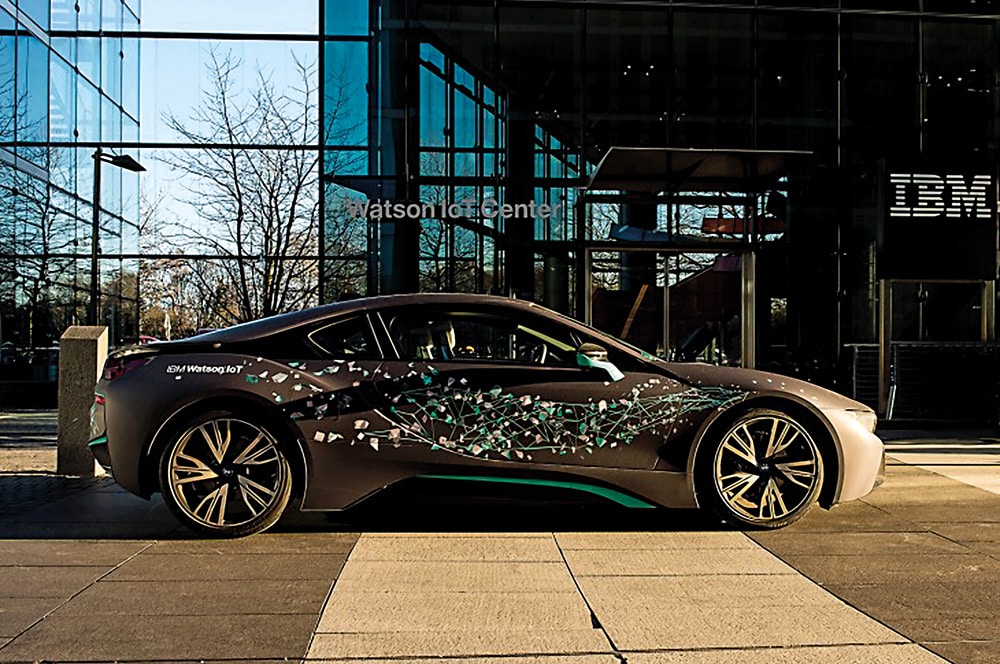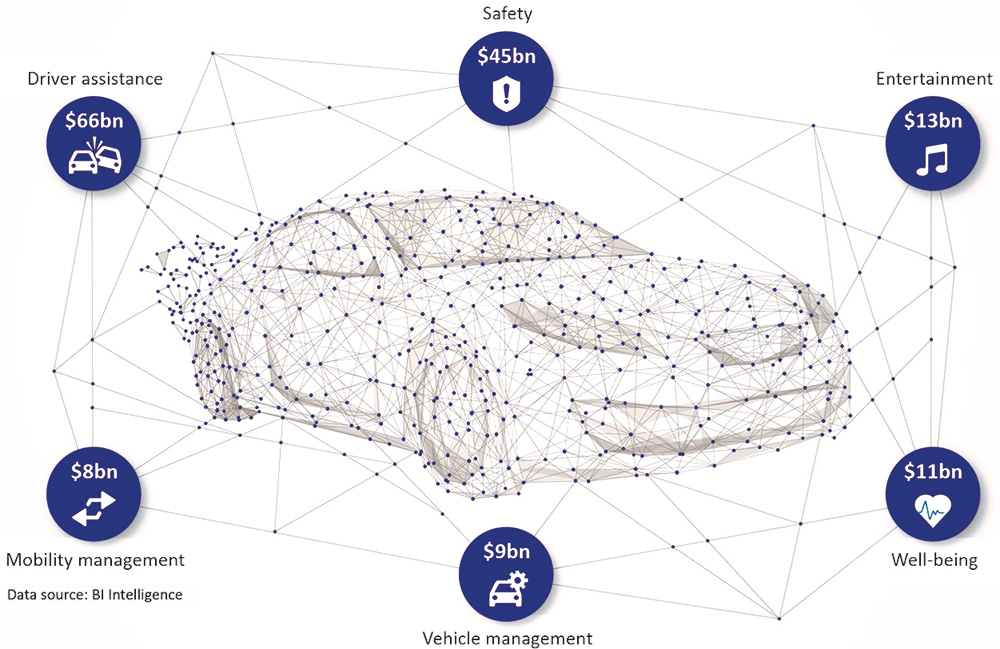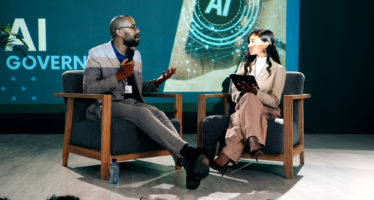Ian Fletcher, IBM: Immersive Transportation and the Internet of Everything
As we enter the Fourth Industrial Revolution, we may come to the stark realisation that nothing will ever remain the same. We are being exposed to continuous change, exciting new areas of innovation and groundbreaking technologies that are transforming the fabric of our world. While we may accept the inevitability of change, we also do so with some reticence and trepidation as we try to visualise what the future will look like and what our role in it will be. What is more certain is that we will be living in a completely interconnected world, where many decisions are either influenced or made for us through Artificial Intelligence (AI) linked with smart devices to produce data-driven insights. The outcome is the same: We will be fully connected to and integrated with future technology, developing an interdependency and reliance on its outcomes.

This article is the fourth in a series about the Fourth Industrial Revolution (4IR). Here I explore the phenomenon of how the ‘Internet of Everything’ is enabling an immersive transportation experience. In doing so, I will also explore some of the challenges to do with trust, transparency and accountability.
To fully understand the growing impact of 4IR, we must first cast our minds back to the end of the Third Industrial Revolution, now cresting, which was made up of three eras of computing – Counting, Programmable and Cognitive. The current Cognitive Era – built upon the capabilities of AI – is as much a cultural phenomenon as an advance in technology. Artificial intelligence is one of the most important technical developments in our lifetimes – flowing like electricity through everything, fueled intelligently by our personal data which generates the current, and becoming the “modern day competitive edge”. When combined with other transformative technologies like the Internet of Things (IoT), 5G mobile networks, edge computing, cloud, quantum and neuromorphic chips that mimic the synapses of the human brain, we create a landscape full of potential for exponential change. With billions of smart sensors connected to every device imaginable and all communicating simultaneously, we start to perceive a real-time immersive world unfolding before our eyes.
Transportation-as-a-Service
Over the next few years, our transportation ecosystem will change beyond all recognition, becoming more economically and environmentally viable. Manufacturers are keenly aware of the big issues on the global agenda: Climate change and carbon emissions, energy optimisation, sustainability, city overcrowding and central government initiatives to reduce the number of vehicles on the roads. In response, they’re having to look at alternative business models such as Transportation-as-a-Service to address these challenges.
Transportation-as-a-Service is enabled by the advent of autonomous vehicles, the Sharing Economy and the expansion of on-demand services. It’s also starting to become part of the mainstream. According to the “Future Today Institute Tech Trends” 2019 report, the customers’ mindset is changing with regard to the way that transportation assets are owned, operated and managed. It estimates that car sharing services will serve over 20 million users worldwide by 2020.
With the potential global reduction in car ownership threating traditional business models, manufacturers are experimenting with consumption-based, pay-per-use structures such as a ride-sharing model in Dubai called Udrive. Even the larger, more established manufacturers are starting to provide rentals by the minute or mile in some urban centres. Manufacturers are also testing out new business models like Audi on demand, Care by Volvo and Porsche Passport, which gives members access to 22 models of Porsche for a recurring monthly fee. With car ride-sharing services already well-established, new platforms are extending into transportation modes including micro-mobility, electric scooters and motorcycles. This paradigm shift is taking place at surprising speed, forcing manufacturers and service providers to become more agile around providing customers with the choice to buy, hire, rent or subscribe. Even the used car market is getting in on the act. With algorithm-based vehicle pricing, potential customers can evaluate dynamic information that accurately describes the state of the vehicle (well beyond its age and miles) as well as a range of financial options that better suit consumers’ needs.
Connected Cars
The first and most likely transition into the immersive transportation ecosystem will be the connected car. This is where we see technological capabilities like the Internet of Everything, 5G, AI and data-driven insights coming into their own and completely reshaping the foundation of the industry.
A connected car is a vehicle containing devices that connect and exchange data with networks and services inside and outside the vehicle. The connected car market is estimated to be worth in excess of USD 200 bn by 2025, according to a recent study by IBM’s Institute for Business Value – “Securing privacy for the future of connected cars”.
There are three categories of connected cars:
- Connected-only vehicles: Equipped with integrated systems such as internet access and a local area network that controls basic systems across the vehicle. At its most basic, the software runs an integrated entertainment and communication system.
- Semi-autonomous vehicles: More advanced features such as convoy cruise control, automatic brakes and parking assistance.
- Fully-autonomous vehicles: Capable of sensing the external environment and navigating without any human input. It may include embedded AI and real-time data connectivity.
Each vehicle can process up to 25 gigabytes of data per hour, which represents new data opportunities for vehicles to communicate with each other (V2V), network (V2N), infrastructure (V2I), pedestrian (V2P) and everything (V2X), all driving an increased demand for an array of interconnected services.
Immersive Experiences
As the connected car world evolves, we will have to accept that many of our traditional driving tasks will instead be done for us using AI. Ultimately the human factor may be completely removed from the control of the vehicle. This provides an opportunity for manufacturers to develop more immersive experiences such as entertainment, intuitive navigation, advanced route planning, weather updates and recommendations about nearby places en route. With technologies like Voice Search Optimisation (VSO), we will soon be talking to a smart speaker, head-up displays, our car’s dashboard or our mobile digital assistant in order to avoid the traditional distraction of modern driving. Vehicles can be integrated with smart home functionalities (V2H) that allow drivers to enable devices (such as lighting, heating, entertainment systems or garage doors) before arriving home. Wearable devices can also be integrated into the functionality of the connected car in order to obtain smarter and safer mobility. Finally, new security capabilities are emerging with advanced facial recognition that uses our biometric data to interface with smart glass to open, start or communicate directly with communication systems. Companies such as Global e-dentity are emerging that use biometric vascular/bone structure matching systems for face or full body recognition, claiming staggering match rate accuracy levels of 1 in 7.5 billion.

Widening the Net
New connected ecosystems will also develop around remote maintenance, traffic management, driver assistance, vehicle emergency, safety, entertainment and wellbeing that use advanced analytics to diagnose problems like a breakdown in real time. Governments see the potential of the connected car to reduce road accidents and deaths, limiting a car’s speed using automatic braking and intelligent driver-assistance systems that are designed to strengthen driver safety as well as provide a more comfortable, easier driving experience.
Insurance companies could be on to a real winner with the connected car. It will be possible to use IoT sensors, telematics and advanced analytics to measure driver behavior, to analyse how the driver reacts – or equally importantly, how the vehicle reacts – to provide more accurate calculations for premiums and usage. New technologies use radar and video sensors to warn the driver of an imminent crash, in addition to being able to track an accident in real time, understanding the vehicle’s speed, direction, weather conditions and culpability. In the event of an accident, these systems then notify the nearest service capable of providing road and/or medical assistance for automatic dispatch.
The connected car market is shaping up to be a major force in the new immersive transportation world and is attracting investment from existing manufacturers as well as new players. Companies like RPMAnetworks (CIOTA-Connected IoT Automobile) in the UAE are starting to emerge, which use hardware and software-based technologies that can be installed into a new or existing vehicle within minutes, instantly converting it into a connected car. This opens up new markets for millions of existing vehicles, accelerating the adoption of the connected car and setting the trend for autonomy. This technology could become widely available as soon as 2020 and may even become mandated if the business case for governments, insurance companies and manufacturers is sufficiently compelling.
The real market opportunity for this connected ecosystem, however, is the ability to facilitate data monetisation through the collection of vast arrays of data to support the forthcoming autonomous car, healthcare and insurance markets. This data will fuel the autonomous market, providing the source for the necessary artificial intelligence, machine learning and data visualisation capabilities.
Looking ahead
Over the next decade we are likely to witness the introduction of self-driving cars, autonomous vehicles, drones and even the flying taxi. The Dubai Government’s Self-Driving Strategy expects it to account for 25% of all road transportation by 2030. Recognising its potential to transform economic value, governments around the world are reevaluating and redesigning the urban mobility architecture required to support it. For this to occur, self-driving or driverless cars will need to be at Level 5 autonomy, whereby they are capable of driving themselves anywhere on the planet, sensing the environment, navigating in all weather conditions, without limitations. The reality is that AI and machine learning is not yet advanced enough today or does not have the required volume of data to support Level 5 autonomy in the real world. It’s a bit like a 5-year-old child in a new school, still learning and trying to find their way around. Level 4 (partial autonomy) self-driving cars are much more realistic and could be for sale much sooner.
Look to the skies
While we wait for the race for driverless innovation to unfold on the ground, exciting innovation is happening above us. It is widely recognised that Uber revolutionised the sharing platform for click-and-ride, and now it is expanding its transportation network to aerial ridesharing (planned for 2023). This ambitious vision uses the top of skyscrapers for point-to-point travel between suburbs and cities to avoid traffic congestion, creating a new user experience that is environmentally conscious. For autonomous cars and flying taxis to become a reality and accepted within society, the industry needs to come up with new insurance systems, new legal rules and government legislation. It needs to be clear who bears the cost if an accident happens!
Conclusion
The Internet of Everything is happening all around us and we must accept its inevitability as part of everything we do and connect to. It represents great excitement, new ways of thinking and innovation that will change our lives. We all generate masses of personal data today, both with and without our consent, which represents huge monetisation opportunities for us as well as the companies that mine it. But as we move headlong into this new immersive world of autonomy, Artificial Intelligence and data, we must do so with caution and with the understanding that there will be a price to pay for progress; our privacy is seriously at risk.
Technology companies, governments, manufacturers and software developers must all incorporate privacy features into the design and build of everything – before the driver gets behind the wheel or the passenger enters the ride-share. If trust is to be achieved, immersive security must become an integral part of the solution, recognising that this connected world comes with ownership, responsibility and accountability. Organisations must consider how to address and govern potential ethical issues that are inevitable with this new technology. Unchecked, concerns about trust, privacy and transparency will become a barrier to adoption. Governments also play a major role here, enacting legislation covering AI ethics, bias and data transparency. It is our data that is fueling the new world. The purpose of AI is to augment human intelligence and enhance our lives, not the other way around.
The views expressed are those of the author and do not necessarily represent those of IBM.
About the Author

Author: Ian Fletcher, IBM Institute for Business Value Director MEA
Ian Fletcher was educated in the UK, building a successful career in IBM Global Services. With over 30 years’ experience in technology and business consulting services, Ian leads the IBM IBV C-suite Study for MEA. Ian also runs IBM’s thought leadership programme, advising clients on business transformation and strategy. Ian specializes on the impact of the Fourth Industrial Revolution and, in turn, its impact on the C-suite and society.
About IBM
IBM is a leading cloud platform and AI solutions company. It is the largest technology and consulting employer in the world, with more than 380,000 employees, serving clients in 170 countries.
About IBM Institute for Business Value
IBM Institute for Business Value, part of IBM Services, develops fact-based strategic insights for senior business executives.
You may have an interest in also reading…
AI Governance in Financial Services: A Board-Level Imperative
Artificial intelligence (AI) is rapidly transforming the financial services industry, offering unprecedented opportunities to streamline operations, enhance customer experiences, and
The AI Revolution in the Boardroom: AI Executives are Arriving Sooner Than You Think
The future of business leadership is no longer a distant prospect; it’s unfolding at an unprecedented pace. Artificial intelligence (AI)
Butcher, Baker, Candlestick Maker: Are the Skilled Trades Safe from AI?
From manufacturing to customer service, artificial intelligence is changing the working world. Are carpentry, plumbing, and electrical work immune? The



















































































